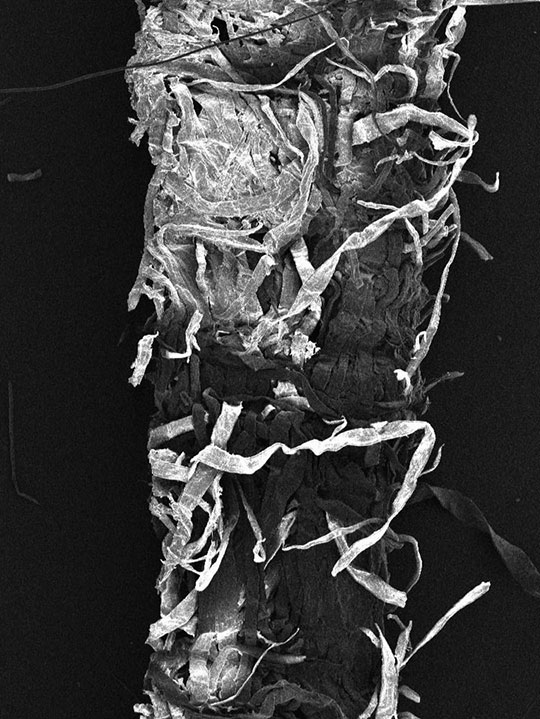2006 - 2020
With the RRRIPP!! Conservation programme ATOPOS is committed to maintaining all pieces in the best possible condition and to respecting each garment’s history, raw materials and philosophy of manufacture. For this purpose ATOPOS collaborates with specialists, universities and conservation schools in Greece and in Europe, such as the ARTESIS Hogeschool Antwerpen. and incorporates these collaborations in the exhibition spaces as a workshop on display in an interactive manner with the public (RRRIPP!! Conservation // Athens, RRRIPP!! Conservation // Antwerp).
The RRRIPP!! Collection consists of more than 500 paper garments, the main core of which is made up of the 60s disposable paper dresses. The collection has been enriched over the years with the addition of key pieces from contemporary fashion designers and some rare examples of paper clothing and accessories from earlier historical periods and non-Western cultures, such as Japan and China.
The collection was started in 2004 and every piece that has been added since then has required varying degrees of conservation or restoration. As the keeper of the largest paper fashion collection in the world, Atopos is committed to maintaining all pieces in the best possible condition and to respecting each garment’s history, raw materials and philosophy of manufacture.
A conservation programme was created by Kyriaki Lentzi (a specialised conservator) for the collection in 2006. The programme concentrates mainly on the more fragile 60’s Paper Dresses and the Japanese pieces from the Edo period. Due to the differences in the conservation requirements and the deterioration factors of the Paper Dresses and the Japanese pieces, it is necessary to treat each garment according to the material from which it is made (woven/non-woven/paper) and the manner of its fabrication (technology / philosophy).
Some of the questions that the conservation programme seeks to explore:
- What type of material is each garment made from; paper or textile?
- What is the best possible method to deal with the various deteriorations?
- What are the most appropriate materials and less intrusive conservation techniques to be used for the best possible results?
Information on the manufacturing methods of the garments was sourced from:
- Literature research
- Observation and microprobe analysis of samples at the scanning electron microscope (SEM-EDX)
- Laboratory tests to observe the behaviour and resistance of the dresses under varying degrees of humidity and temperature.
Finally, conservation is carried out into two phases. The first phase consists of, a) photographic documentation, b) recording of damage, c) material testing to heat and humidity, and d) planning of the conservation methods (techniques and materials). The second phase consists of, a) wet or liquid cleaning, b) de-acidification, c) flattening creases, d) dressings, e) attachments, additions (fixing tears and filling holes), f) conservation of labels and g) aesthetic retouching.
See also:
- 2005 - 2022 RRRIPP!! Collection
- 2005 - 2022 #RRRIPP!!
- 2015 The 6th Symposium of the Hellenic Society for Archaeometry
- Mar 06 - May 30 2009 RRRIPP!! Conservation // Antwerp
- Mar 01 - Apr 29 2007 RRRIPP!! Conservation // Athens

